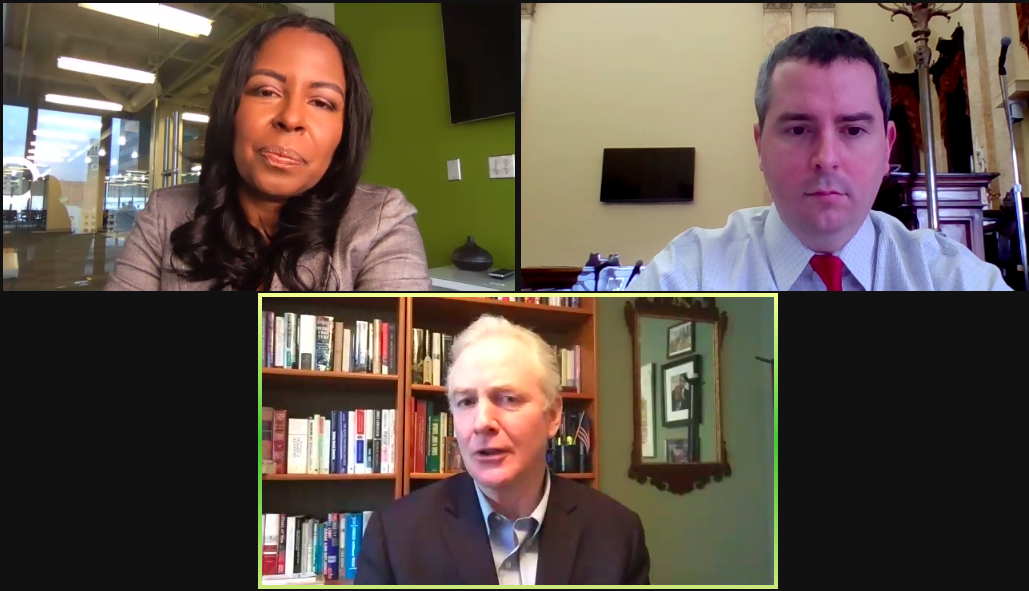Four years can be a long time.
It’s enough to evaluate whether big ideas that were proposed in year one became actions by year two, and perhaps even start to figure out whether they were successful. As multiple years pass, events also have a way of intervening on those plans. To take the example staring us in the face: Most people didn’t even know about COVID-19 a year ago, so at this point four seems like the distant past.
Today, as the nation watches a new four-year term begin with the inauguration of President Joe Biden, it’s worth remembering that while he’s getting ready to lead the U.S. through the cascading crises we now face including a pandemic and the fallout from a coup attempt, he is also setting out a vision for the next four years.
There’s the matter of what he must address today, and more structural changes that could make change going forward.
This can be applied to many issue areas where the Biden administration will start to signal its intentions in the coming weeks. Let’s take the local economy in the Baltimore area and Maryland: There’s the immediate work of digging out of a pandemic-caused recession. When it comes to the innovation economy, there are the longer-term policies on federal R&D spending that will create more ripple effects in an areas with a large concentration of government centers. Here’s a look through both lenses as we head into a new administration.
Recession and recovery
As Biden takes office, a key focus on economic issues will be centered on the pandemic — specifically, the many people who are unemployed and businesses that are struggling as a result of the downturn.
At Downtown Partnership of Baltimore’s Downtown Download series on Tuesday, U.S. Sen. Chris Van Hollen (D-Maryland) said a $900 billion rescue bill passed by Congress in December “was a little late in coming, but it provides some bridge assistance until we get into the early months of this administration.”
“There was lots of assistance there for small businesses and money targeted to small businesses most in need,” Van Hollen said.
For individuals, that bill is providing $600 payments and extended unemployment insurance benefits at $300 a week. For small businesses, that package includes $284 billion for a new round of the Paycheck Protection Program, which will allow some businesses to get a second forgivable loan. And it sets aside specific funds for lenders who serve entrepreneurs of color, such as CDFIs and minority-owned depository institutions, as well as public venues.
As for the Biden administration, policies are still making their transition from the poetry of campaigning to the prose of governing, but the new administration is looking to act quickly. Biden is planning to propose a bigger, $1.9 trillion package of relief. This would include additional $1,400 direct payments to individuals, raising the minimum wage to $15 an hour, expanding broadband access and childcare tax credits, and a host of other provisions.
It’s a big plan, and will be considered after Congress remained deadlocked for months over the smaller relief bill that passed in December. But both houses of Congress will now be controlled by Democrats, though the Senate very narrowly so as it is technically tied 50-50 with VP Kamala Harris casting the deciding vote. It’s not the divided government that was expected, meaning Van Hollen and other Democrats are more bullish on getting the votes for big packages.

(Screenshot)
A little down the road, Van Hollen sees infrastructure spending in areas like not just roads and bridges, but also clean energy playing a role in the local economy.
“We want to work with you to make the city a clean energy hub,” he said. “This is about jobs.”
Overall, Van Hollen said locally focused supply chains, providing resources to small businesses and an emphasis on companies buying local can help cities like Baltimore. It also means being intentional about addressing the racial wealth gap and restructuring of the economy in a bottom-up way.
“I do think we need a Marshall Plan for our urban centers,” he said.
Maryland’s federal presence
Looking out a bit beyond the current crisis, there’s another side to federal government reach in Maryland that could bring a big impact on jobs and the economy. Dr. Richard Clinch, director of the University of Baltimore’s Jacob France Institute, points out that one in 10 Marylanders work for the federal government. That big federal presence is at the heart of the technology and innovation sectors in the state.
The federal labs headquartered in Maryland — like the National Institute on Aging in Baltimore, the wider National Institutes of Health in Bethesda and NASA Godard Space Flight Center, to name a few— account for 14% of all federal research spending.
“Much of Maryland’s critical life sciences and IT has been and is driven by the presence of federal labs and federal academic research,” Clinch said.
It’s not only the centers run by the government that are bolstered by the federal government, either.
Academic institutions like Johns Hopkins University in Baltimore and the schools in the University System of Maryland are also bolstered by federal research funding. In 2018, these academic centers received $3.2 billion in federal funding.
And procurement by the federal government of services offered by a mix of startups and large contractors in the state accounted for $34.8 billion in spending across the state, with lots going to IT and other technology.
There are unknowns at the beginning of every administration, and the economic downturn and uncertainty around the pandemic brings even bigger question marks this time. So it’s hard to know what the exact outcomes are at this time. But given that Biden has signaled that an increase in science and technology R&D funding is coming, Clinch said Maryland is in position to gain going forward.
“The incoming Biden administration is likely to have a greater emphasis on supporting both federal and academic R&D — and thus, subject to budget constraints — Maryland can expect to be a big winner in this investment,” Clinch said.
Plus, Clinch said, Biden is “more likely to add to the federal workforce, expand federal contracting (benefitting MD’s huge and tech-oriented contractor tail), and reverse Trump administration efforts to decentralize the federal workforce — all of which are positive for Maryland,” he said.
These are the longer term policies that might not be apparent right away, but reflect the shifts throughout the breadth of the federal government that are evident with each change of power.
“All in all,” he said, “Maryland can expect to benefit significantly from the change in administrations.”

This editorial article is a part of What's Next for the Economy? Month of Technical.ly's editorial calendar.
Before you go...
Please consider supporting Technical.ly to keep our independent journalism strong. Unlike most business-focused media outlets, we don’t have a paywall. Instead, we count on your personal and organizational support.
Join our growing Slack community
Join 5,000 tech professionals and entrepreneurs in our community Slack today!

Look inside 4MLK, the University of Maryland BioPark’s new 250k-square-foot life sciences hub

Supreme Court upholds TikTok ban, as creators and communities brace for impact

I’m a teenager who quit social media — and I’ve never been happier


